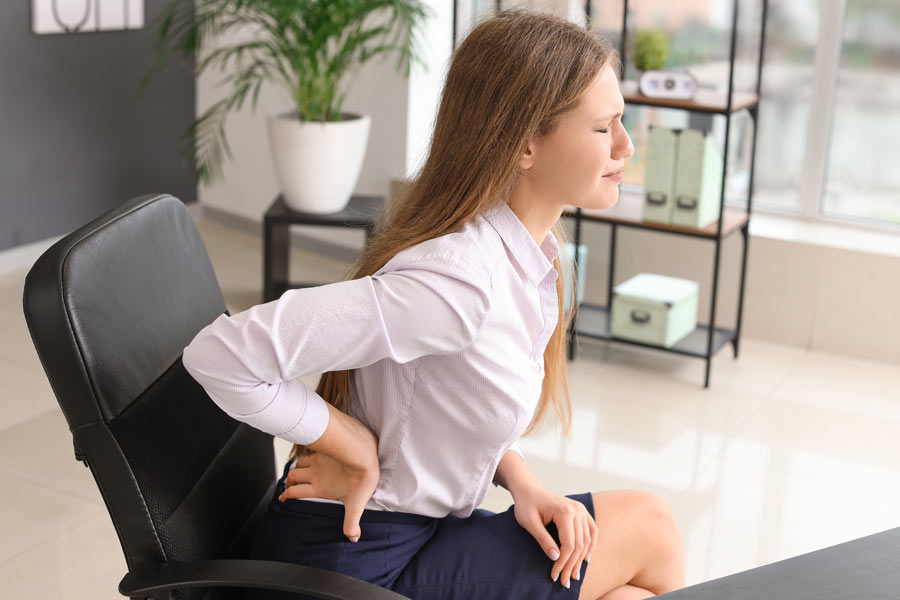 Back pain impacts us all. 50%-80% of all adults will experience at least one episode of back pain during their lifetime. Even if we personally do not experience back pain, it is likely that someone close to us will. Accordingly, in this time of social distancing, decreased access to fitness facilities, and individuals working remotely from home, sitting is likely to have a more prominent part of our lives.
Back pain impacts us all. 50%-80% of all adults will experience at least one episode of back pain during their lifetime. Even if we personally do not experience back pain, it is likely that someone close to us will. Accordingly, in this time of social distancing, decreased access to fitness facilities, and individuals working remotely from home, sitting is likely to have a more prominent part of our lives.
The question is whether the increase in sitting time increases the risk of back pain.
First, we must acknowledge that the origins of back pain are multifactorial. This review only considers the mechanical effect that sitting has on our spines. It does not necessarily consider other biological, psychological or social events that may contribute to back pain.
Functionally, the spine has three major roles:
- It allows movements between body parts
- It protects the spinal cord and nerve roots
- It carries loads
This review will focus on the last of the spine’s role, to carry loads and what happens when we sit.
One of the earliest studies that looked at how sitting affects the lower back was performed by placing a sensor directly into the discs of “volunteers.” Various positions were tested, and it was found that sitting and leaning forward while sitting created the highest pressures within the lumbar discs. More recent studies with advanced technology have confirmed these findings.
Despite these conclusions, no consensus regarding the causality between sitting and back pain exists.
In a recent 2019 study, which looked at sitting time measured objectively (with either a laboratory-controlled time trial, direct observation, or a wearable sensor), sitting provoked pain in individuals without a history of low back pain. Further, in study-subjects who had a history of low back pain, it was found that they experienced a higher level of pain intensity than asymptomatic controls. Specifically, it was found that in study subjects who sat for one hour to approximately 7 hours per day for 5 days, an association with immediate low back pain was observed. The authors, however, were careful to advise that it is unclear whether this indicates a risk for any long-term effect from sitting and the condition of clinical low back pain.
In contrast, another study found that a longer duration of sitting periods at work in blue-collar workers was associated with a favorable time course for low back pain. Sitting was a form of rest in this environment. Nevertheless, despite the lack of consensus, there are studies that recommend strategies for minimizing low back pain as it relates to sitting.
While sitting, implementing a chair that has the ability to recline can be helpful. In one study, an MRI was used to evaluate biomechanical stresses in the lumbar spine at various sitting angles. Surprisingly, “sitting up straight” with a 90-degree thigh-trunk angle was not the best position. It found that a thigh-trunk angle of 135 degrees had the least stress on the lumbar spine. The lumbar curvature of the spine was optimal in this position. Therefore, if you do have to sit, recline back to decrease strain on your lumbar spine.
Consider the use of a sit-to-stand workstation. These workstations rely on the individual, however, to take an active role in achieving the sit-to-stand posture.
Other recommendations include participating in exercise and activities known to treat and prevent low back pain. Activities like yoga, in particular, have had strong advocates. Yoga may also be practiced in the context of social distancing.
Finally, low back pain prevention and management have been successfully addressed through education. Further guidelines include self-management and the resumption of normal activities soon after symptoms resolve.
Dr. John, Esq. is both an attorney and a physician. Before obtaining his law degree, Dr. John Naranja practiced for approximately 12 years as an orthopedic surgeon.
